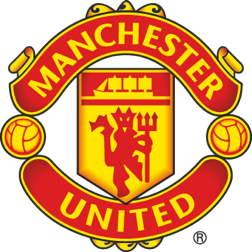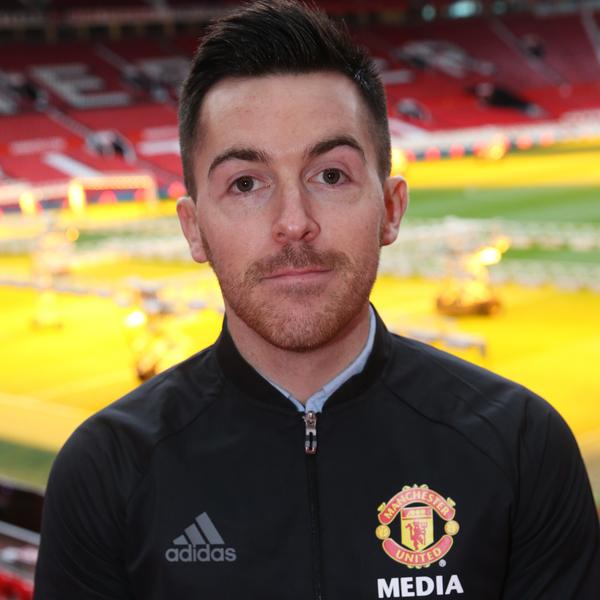Long read: When United played in New Zealand
As Manchester United prepare to visit Australia, Singapore and Shanghai as part of our 2019 pre-season tour, we take you back to 1967 when the Reds embarked on a post-season tour, which included our furthest-ever away fixture in New Zealand! Here’s the inside story of that eventful set of games...
It’s a United tour so unlikely it could be the start of a pub joke. “Heard the one about the team that visited the southernmost nation in the world, scored 19 goals to one, but started a football renaissance?” It’s hard to believe, but true.
In the summer of 1967, one of United’s greatest teams — featuring the holy trinity of George Best, Bobby Charlton and Denis Law — circumnavigated the globe on a mammoth post-season tour, including a stop in New Zealand, the longest journey in our history.
The visit put football on the map in the land of kiwis and rugby, boosting the sport there to unprecedented levels. The grandiose trip was first discussed at a United board meeting in early March, 1966, after an invitation had been received from the Australia Football Association. The schedule was confirmed a few months later, with a series of matches in Australia, California and two in New Zealand.
And United toured as champions. The 1966/67 title was sealed with an imperious 6-1 win at West Ham, and the following week, after a 0-0 draw with Stoke, the Division One trophy was paraded around Old Trafford for the seventh time. Four days later the squad was on their way.
“When they told us about the trip it sounded like the other end of the earth,” recalls Paddy Crerand. “We were used to going to Europe. Quite a few of us were surprised…but it was an adventure.”
“When they told us about the trip it sounded like the other end of the earth... but it was an adventure.”
United faced Benfica in Los Angeles (1-3), before another tough test against Dundee (2-4) in San Francisco, though Crerand says the players were still in celebratory mode. “We’d just won the title after a hard season,” he says. “We wanted to unwind a bit.”
Hawaii was the next stop, where news filtered through of Celtic’s European Cup victory over Inter Milan. “It was massive,” says Crerand. “Especially for the Scottish lads among us, we were pretty happy for them.”
That ended United’s dreams of being the first British side to lift the trophy, but seemed to solidify Sir Matt Busby’s determination to win it. The rest of the tour took on a more serious edge, as their first steps in preparation for the 1967/1968 season.
That was evidenced by their initial training session in New Zealand, watched by a crowd of members of the Auckland team who they would play three days later. “We were in awe,” recalls Auckland forward Mark Burgess. “It was a great session and they looked like they were here to play.”
United had arrived earlier that day, with Auckland defender Paul Rennell enjoying an unexpected encounter with the team. Rennell was dropping his girlfriend at work when he noticed the United team bus pull up outside the Royal International Hotel, the same establishment where Mick Jagger and Keith Richards had composed ‘Paint It Black’ two years earlier. Rennell parked nearby, then wandered into the city hotel, meeting several New Zealand Football Association councillors.
“I was introduced to Matt Busby, [chairman] Lou Edwards and some players,” says Rennell. “It was pretty surreal, guys I had only seen on news reels at the cinema right there in front of me.”
Rennell also witnessed Busby’s firm sense of discipline and duty. The boss spotted Law and Best heading upstairs for a nap after the long flight, despite a posse of photographers waiting in the lobby. “He saw them and said ‘You’ll put your number ones on and be back down in 10 minutes for some photos,” recalled Rennell. “After that you can sleep.”
Later the United squad headed out for a quick pint, only to fall foul of New Zealand’s licensing laws at the time, where the ‘six o’clock swill’ was part of the culture.
“It was just past 6pm and the pubs were closed,” says Crerand. “People were all walking out and we thought something was wrong. Only later did we realise what was happening. Other things were hard to get used to; phone calls from home would come at 4am, which didn’t thrill your roommate.”
Reds in New Zealand
GalleryWe've found 10 extremely rare images of the post-season trip in 1967.
“New Zealand football was in dire straits,” says Burgess, “So the United tour was a god send financially. And it was an amazing side, all internationals. There was great media interest and such a buzz around.”
But they were also different times, allowing the United players a degree of anonymity impossible today. Some of the squad ended up in a lock-in at an Auckland pub one night to get around the licensing laws, and Rennell received an unusual request.
“Some wanted to go gambling and asked if I knew a bank manager,” said Rennell. “I passed on a contact at the National Bank and something must have worked out, because they went out to play darts and cards.”
The night before the match the entire Auckland squad — which included an engineer, an electrician, a painter and two sales reps — met their revered counterparts at a central city function. As they mixed with officials and sponsors the home side all wore name badges, but, not surprisingly, that wasn’t deemed necessary for the famed United squad.
Future Prime Minister Rob Muldoon thanked the United team for making the long journey, while three time Olympic gold medallist Sir Peter Snell, later recognised as New Zealand’s athlete of the 20th century, handed out cartons of cigarettes as a representative of local tour sponsor Rothmans.
“They were all decent blokes, friendly guys,” recalls Auckland fullback Bill Hunter, who ran a trucking business. “I remember one of them asked me how much we got paid. I told him it was costing me money to be there. He was shocked.”
United's match in Auckland drew 26,000 fans, the biggest football crowd the city had seen and a figure that wasn’t beaten until 1981.
“Our left full-back Gary Lake had been beaten four or five times but the next time I looked up he had walked off,” says Rennell. “We had to bring on a student to replace him, though it later turned out [Lake] was injured.”
“The whole crowd wanted Bobby Charlton to score,” recalls Auckland wing Ray Mears. “He had six or seven shots, one hitting the rugby posts behind the goal.”
The match ended 8-1, with John Aston (3), Best (2), Noel Cantwell (2) and Brian Kidd netting for United. Both teams were hosted at an after match function, then Rennell put on a party at his house.
“I knew a couple of publicans so they organised some booze,” said Rennell. “Some friends also rang around to invite some people. The word must have got around; I walked in and have never seen so many birds in one place.”
Best, who had muted birthday celebrations a week earlier in the United States, wanted to cut loose. “He was the life of the party,” says Rennell. “Telling stories, playing the piano, singing songs. Though I remember at one point Noel Cantwell picked him up by his collar and said ‘George, make sure you behave yourself lad’.”
“In the progress of New Zealand football, the Manchester United tour was pivotal. There was a buzz around the sport again."
“Some of the players I’d never met before,” says Burgess, “So it wasn’t ideal.”
There was some unexpected drama for the local side, after the referee decided they couldn’t wear their traditional black kit under the patchy floodlights.
“Someone dug out the white t-shirts we had worn at training earlier that day,” says George York. “They were still wet.”
The game was even more one sided than in Auckland, with steady rain creating a slick surface for the United team, who prevailed 11-0.
“The ball was zipping around and it was hard to get near them,” says Burgess, who was one of three international cricketers, alongside teammate Grahame Bilby and Cantwell to feature in that match. “But they were gentleman throughout. I remember catching Paddy Crerand on the knee and I was apologising like hell. He said, ‘Don’t worry about it… it wasn’t your fault.’”
The final act in a memorable tour was provided by Charlton’s third goal that night, as he chipped the ball past the prone New Zealand goalkeeper Stroud, who had got one of his under shirts stuck over his head as he tried to take it off.
“It was a bit embarrassing,” says Burgess. “But I talked with Bobby years later and he seemed to remember it very fondly.”
United then blazed a trail through Australia, scoring 29 goals and conceding only six in eight matches, before returning home, 42 days after they had set off.
The tour was arguably the beginning of United’s rise as a global brand, symbolised by a crowd of Indian fans, decked out in United kit and scarves, waiting for them at 2am as their plane stopped to refuel in New Delhi on the journey home.
The team’s impact on the ‘Shaky Isles’ also went far beyond two football matches.
“As a landmark in the progress of New Zealand football, the Manchester United tour [was] pivotal,” says New Zealand football historian Josh Easby. “There was a buzz around the sport again and within three years a national league was established. It also heralded the start of regular visits from top British and European club sides.”




